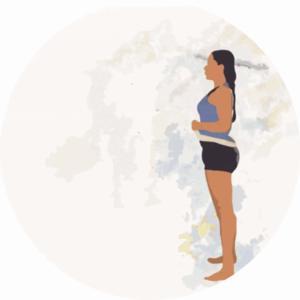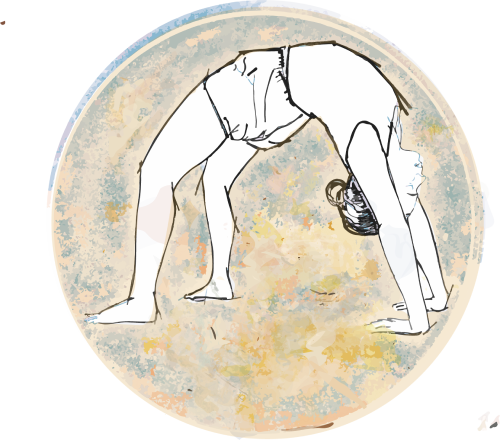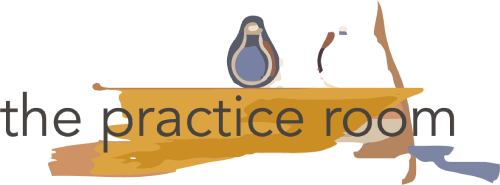What kind of Yoga is taught at The Practice Room?
We teach in the tradition of Shri BKS Iyengar, also know as Iyengar Yoga. You will find details of Iyengar Yoga Here.
Is Group Classes a good way to learn yoga?
Yoga is primarily self study. Sooner or later, the student has to take responsibility for, and control of, their own practice.
- Group classes build this attitude of independence from the beginning. The student learns to become self-reliant, and experiment with his/ her practice. At the same time, the instructor is present to make any corrections, and address any doubts
- While it can be good to start your yoga journey with a goal in mind, we can often get caught up in our own narrow goals. In a group class, you will develop a wider perspective from looking at other individuals in the class. Their strengths and weaknesses, their problems and queries, all of these contribute to your learning of yoga. Specifically in our tradition, you will also have the opportunity in class to partner with your fellow students, and observe and learn from each other.
Our tradition is particularly suited to group classes, as the instructional methodology developed by Guruji BKS Iyengar, and refined by Geetaji, Prashantji and other senior teachers, is highly systematised. The instructions are clear, they are usually accompanied by clear demonstrations, disclaimers are clearly given for the most common mistakes as well as contra-indications, and the teachers are trained to observe keenly and make corrections where required.
At a more practical level, group classes are usually much more affordable than private lessons from a good instructor.
Read the response to the question: “When do you advise personal consultations?”, and if you do not fall into any one of the ‘Exceptions’ categories, we recommend group classes for everyone.
What are the other modes of instruction? Does The Practice Room have Online Classes? Does the Practice Room have Personal training/ private lessons?
Our primary mode of instruction is Group Classes. However, we do have an ever-expanding library of recored classes (organised into different levels), as well as some provision for Private lessons. Follow the tabs above to know more about these.
Why are the classes organised into ‘Levels’?
Levels indicate advancement along the path of learning Asana/ Pranayama – starting at ‘Beginner’ level and going towards the ‘Advanced’ level. The Level decides both what is taught in the class, as well as the level of skill/ information that the student is expected to have. Organising the batches into ‘Level’ help in ensuring that the group is cohesive, and a progressive curriculum can be followed. The advancement across the ‘Levels’ is not just based on one’s physical abilities, but is more importantly based on the maturity in practice. Some of the things that an advanced practitioner is expected to develop are:
• Ability to hold Asana positions with comfort and grace for extended periods of time without exhaustion or distraction,
• Regularity and consistency in self-practice over the years,
• Ability to modulate and sequence ones practice in different life situations, quality of ‘meditatively’ in ones practice,
• More than some ‘Pranayama Techniques’, an appreciation of the use and application of ‘Breath’ in one’s practice.
• Specifically in the Iyengar tradition, it also includes an appreciation of the intelligent and discriminating use of props or supports.
The ’Levels’ are not water-tight compartments, but indicative. Also, the times indicated are based on our experience of having studied in the Iyengar tradition ourselves, having taught many students over the year. These times may differ in other traditions/ situations.
In our In-studio classes, the student usually has a fairly good idea of their level since they can easily compare it to those around them. And the teacher is able to guide the student about which ‘Level’ classes they should be attending.
In the Online format with no such guidance, choosing ones level is the students’ responsibility. Choosing above one’s level is likely to result in a superficial understanding of the Asana actions. Some of the instructions and prop uses might not make sense. The session might leave you feeling confused, distracted, bored. If this is the case, we recommend going to the previous level.
What are the ‘Levels’ of Classes taught at the Practice Room? How do I know my class ‘Level’?
The most common way of categorising class levels is Beginner, Intermediate and Advanced. We follow the same norms, but use slightly different terms for our Online Classes and In-Studio Classes. Please read the following carefully to understand this:
'LEVELS' for In-Studio Classes: FOUNDATION, CONSOLIDATION, ADVENTURE

In-studio class Level Foundation
This level starts with absolute Beginners to yoga, or those with some experience of yoga in other traditions. Systematically and progressively, the’Foundation’ is laid for a long-term practice of Asanas. We further categorise the first three months as ‘Absolute Beginners’.
At the end of 12 – 18 months, students have been introduced to the foundational Asanas in standing, seated, forward extensions, backward extensions, twists, restorative positions, the use of the basic ‘props’ like blocks and belts, and most students are ready to start attempting the basic inversions (Sirsasana-Headstand and Sarvangasana-Shoulderstand) with support.
In-studio class Level Consolidation
This Level consolidates, as well as builds upon the previous level. The basic inversions (Sirsasana-Headstand and Sarvangasana-Shoulderstand) are introduced. While the Foundation level focusses on standing Asanas, and the use of arms and legs, this level introduces more complex actions in the spine, hips, shoulders etc. Pranayama is introduced in the supine position.
Women are given more guidelines about the menstrual practice – the basic menstrual sequence, actions that are to be avoided, adaptations that can be made, and actions that should be done ‘mildly’.
Those with any health conditions and limitations are also given more guidance about adjusting their practice (back, knee etc.) – actions that are to be avoided, adaptations that can be made, actions that should be done ‘mildly’
In-studio class Level Adventure
The level Adventure tackles physically challenging Asanas. More than being ‘advanced’, this level requires readiness to take on and maintain inversions, back arches etc. with confidence.
'LEVELS' Online Classes: Beginner, Experienced Beginner, Intermediate and Gentle

Online Level Beginner
- Suitable for complete beginners to yoga or for those who have has some experience in other traditions of yoga
- We recommend online Beginners to start by looking at the ‘Preparatory’ videos. These videos familiarise beginners with basic instructional vocabulary, use of common props etc.
- Instructions are kept simple, and only the foundational Asanas are taught at this Level
Online Level Experienced Beginner
practitioners are expected to have
- Familiarity with all the foundational Asanas in standing, seated, forward extensions, backward extensions, twists, restorative positions.
- Introduction to the basic inversions: shoulder stand and headstand
- Familiarity with the use of the most commonly used props – wall ropes, blocks, belts, blankets
- Familiarity (complete proficiency is not required)with the Sanskrit names of the Asanas
- Some idea of how to modulate ones practice for the days of menstruation ( for women)
- Some idea of how to modulate ones practice for any health conditions or limitations (back, knee etc.)
Online Level Intermediate Level practitioners are expected to develop
- Familiarity with all the foundational Asanas in standing, seated, forward extensions, backward extensions, twists, restorative positions, Inversions (handstand, elbow balance, shoulder stand, headstand
- Ability to appreciate the individual ‘actions/ component parts’ of an Asana ( in other words, the intermediate positions that come together to make the final Asana)
- Familiarity with the use of props – wall ropes, blocks, belts, blankets, chairs and bolsters
- Increased familiarity with the Sanskrit names of the Asanas
- Familiarity with the menstrual practice (for women) – the basic menstrual sequence, actions that are to be avoided, adaptations that can be made, actions that should be done ‘mildly’
- Familiarity with adjusting ones practice for any health conditions or limitations (back, knee etc.) – actions that are to be avoided, adaptations that can be made, actions that should be done ‘mildly’
- Confidence to take on the more challenging Asanas
- Familiarity and comfort with supine Pranayama
The Level GENTLE also follows the above scale, and is addressed to:
- Elderly practitioners
- Those with health limitations
- When one is recovering from an illness injury
- Anyone else who will benefit from a slower paced practice with more support/ props


